You are using an out of date browser. It may not display this or other websites correctly.
You should upgrade or use an alternative browser.
You should upgrade or use an alternative browser.
INTL India - China border crisis (Main Thread)
- Thread starter lonestar09
- Start date
Zagdid
Veteran Member
Tibetan Soldier's Death Near Tense India-China Border Sheds Light on Covert Unit
By Reuters, Wire Service Content Sept. 2, 2020, at 11:58 a.m.
BY RUPAM JAIN AND Devjyot Ghoshal
MUMBAI/ NEW DELHI (Reuters) - The death of a Tibetan member of an Indian special forces unit in a mine blast near the site of a border flare-up with Chinese troops has offered a rare glimpse into a little-known group of elite, high-altitude warriors.
Tenzin Nyima, 53, was killed and another commando critically wounded in the blast near the shores of the Pangong Tso lake in the western Himalayas, three Indian government officials and two members of his family told Reuters.
Indian and Chinese forces came close to direct confrontation in the area over the weekend over competing territorial claims, their governments have said.
Nyima was part of the Special Frontier Force (SFF), his family and three Indian government officials said.
The force recruits mostly from Tibetan refugees, hundreds of thousands of whom have made India their home since the Dalai Lama fled Tibet following a failed uprising in 1959. Some are Indian citizens.
Few details are publicly known about the covert force set up soon after a war between India and China in 1962. Two officials estimated its strength at more than 3,500 men.
Amitabh Mathur, a former Indian government adviser on Tibetan affairs, said the SFF were "crack troops, especially in the context of mountain climbing and high-altitude warfare.
"If at all they (SFF) were deployed, I am not surprised. It makes sense to deploy them at high altitudes. They are terrific mountain climbers and commandos."
India's defense and home ministries did not respond to a request for comment on the SFF.
China has long considered the presence of a large number of Tibetans in India as a threat to its territorial integrity. They are led by Tibet's spiritual leader, the Dalai Lama, whom Beijing denounces as a dangerous separatist.
He says he only wants genuine autonomy for his remote Himalayan homeland.
Chinese foreign ministry spokeswoman Hua Chunying told a news briefing on Wednesday she did not know whether Tibetans were fighting for India, but urged caution.
"We are firmly opposed to any country, including India, supporting the secession activities of Tibetan pro-independence forces or providing them with any assistance or physical space," she said.
TIBETANS SEEK RECOGNITION
Within the Tibetan community, grieving has begun over Nyima's death, video footage taken by the family and shared with Reuters shows.
His body was kept in a coffin covered with Indian and Tibetan flags in a refugee colony in Choglamsar village of India's Ladakh region.
Two bereaved relatives and two neighbors of Nyima told Reuters that an Indian government official who delivered the coffin told them that Nyima died "while defending India".
The official requested that the family refrain from speaking about Nyima's 33-year service with the SFF, the relatives said, requesting anonymity as they feared the Indian government might act against them.
The defense ministry and home ministry did not immediately respond to questions about the relatives' account.
Photographs of the coffin and the Tibetan mourning rituals were circulated on WhatsApp groups run by Tibetan refugees in Leh, the main city in Ladakh, and in Dharamshala in northern India, the seat of the self-styled Tibetan government-in-exile.
Some wanted greater recognition for the Tibetans' service to India.
"We respect and love India for giving us shelter but it is time the nation acknowledges the crucial role played by our men in the SFF," Lhagyari Namgyal Dolkar, a 34-year-old lawmaker of the Tibetan parliament-in-exile, told Reuters.
"If an Indian soldier dies, the country declares him as a martyr, government pays rich tribute. Why are Tibetan refugees not bestowed the same respect?" said Dolkar, whose uncle fought alongside Indian soldiers against Pakistan in 1999.
A senior Indian military official said the SFF had played a pivotal role in the 1971 war with Pakistan that led to the creation of Bangladesh as well as a near-war with Pakistan again in 1999 over the Kargil heights.
The prime minister of the Tibetan government-in-exile, Lobsang Sangay, said his "government does not comment on the SFF".
Plain Jane
Just Plain Jane

Indian and Chinese defense ministers set for meeting in Moscow over border row
The defense ministers of India and China are expected to hold talks in Moscow later on Friday, government officials said, the highest level face-to-face political contact since tensions flared along their disputed mountain border in May.
NEWS
SEPTEMBER 4, 2020 / 2:03 AM / UPDATED 17 MINUTES AGO
Indian and Chinese defense ministers set for meeting in Moscow over border row
Devjyot Ghoshal, Nigam Prusty
3 MIN READ
NEW DELHI (Reuters) - The defense ministers of India and China are expected to hold talks in Moscow later on Friday, government officials said, the highest level face-to-face political contact since tensions flared along their disputed mountain border in May.
Both sides deployed additional forces along the frontier running through the western Himalayas, after a clash in June, during which 20 Indian soldiers were killed in hand-to-hand fighting.
Indian Defence Minister Rajnath Singh was given clearance to meet his Chinese counterpart Wei Fenghe in Moscow, where both are attending a Shanghai Cooperation Organisation meeting, an Indian government official said. The request for the meeting came from the Chinese side, the official added.
“Subsequently a green signal was given for the meeting,” the official said, asking not to be identified because of Indian service rules.
There was no word from China, but Hu Xijin, editor-in-chief of China’s state-backed Global Times newspaper said on Twitter that a meeting between the defense ministers was expected.
Despite the brutality of the clash in June, both sides appeared to observe a protocol to avoid the use of firearms in the high altitude region. And while there have been no further clashes reported, the situation on the frontier remains tense.
Military commanders and diplomats have been holding talks to end the standoff on the Line of Actual Control, or the de facto border, but there has been little progress.
Last weekend, Indian officials said forces on the border mobilized to deter Chinese troops, whose movements suggested they aimed to occupy a hilltop that India considered to be within its territory.
“The situation along the LAC is slightly tense,” Indian army chief General Manoj Mukund Naravane told Reuters partner ANI during a tour of the frontier in the Ladakh region, adding that he believed talks could help resolve the situation.
A U.S. government source told Reuters in Washington that the U.S. assessment is that neither China nor India are interested in pushing the dispute to the point that they would engage in war.
Reporting by Devjyot Ghoshal; Additional reporting by Mark Hosenball in WASHINGTON D.C.; Editing by Sanjeev Miglani & Simon Cameron-Moore
Our Standards:The Thomson Reuters Trust Principles.
jward
passin' thru
Global: MilitaryInfo
@Global_Mil_Info
2h
India / China Tensions: - Extensive talks held on Monday, Tuesday, Wednesday and Sunday produced no concrete results. - Warning shots occurred in Eastern Ladakh. - PLA have brought additional troops, tanks and equipment near Pangong Tso.
@Global_Mil_Info
2h
India / China Tensions: - Extensive talks held on Monday, Tuesday, Wednesday and Sunday produced no concrete results. - Warning shots occurred in Eastern Ladakh. - PLA have brought additional troops, tanks and equipment near Pangong Tso.
jward
passin' thru
Wars on the Brink
@WOTB07
45m
All indications suggest the ongoing skirmish between China and India has gone way beyond a peaceful solution now.
Indian and Chinese troops are in a stand off at a location near North of Rezangla heights in Eastern #Ladakh. 40 PLA soldiers take up positions very close to an India forward post. #Ladakh
+++++++++++++++++++++++++++
Indo-Pacific News
@IndoPac_Info
13m
Fresh faceoff between #Indian, #Chinese troops as tensions mount at LAC Indian & Chinese troops are engaged in a fresh standoff at the heights around Rezang La 40-50 Chinese troops face-off Indian troops that are holding on to the mountain heights. https://indiatoday.in/amp/india/stor
@WOTB07
45m
All indications suggest the ongoing skirmish between China and India has gone way beyond a peaceful solution now.
Indian and Chinese troops are in a stand off at a location near North of Rezangla heights in Eastern #Ladakh. 40 PLA soldiers take up positions very close to an India forward post. #Ladakh
+++++++++++++++++++++++++++
Indo-Pacific News
@IndoPac_Info
13m
Fresh faceoff between #Indian, #Chinese troops as tensions mount at LAC Indian & Chinese troops are engaged in a fresh standoff at the heights around Rezang La 40-50 Chinese troops face-off Indian troops that are holding on to the mountain heights. https://indiatoday.in/amp/india/stor
Last edited:
jward
passin' thru
China, India accuse each other of firing shots in tense border region

Matt Ho
Published: 10:28am, 8 Sep, 2020
Updated: 3:23pm, 8 Sep, 2020
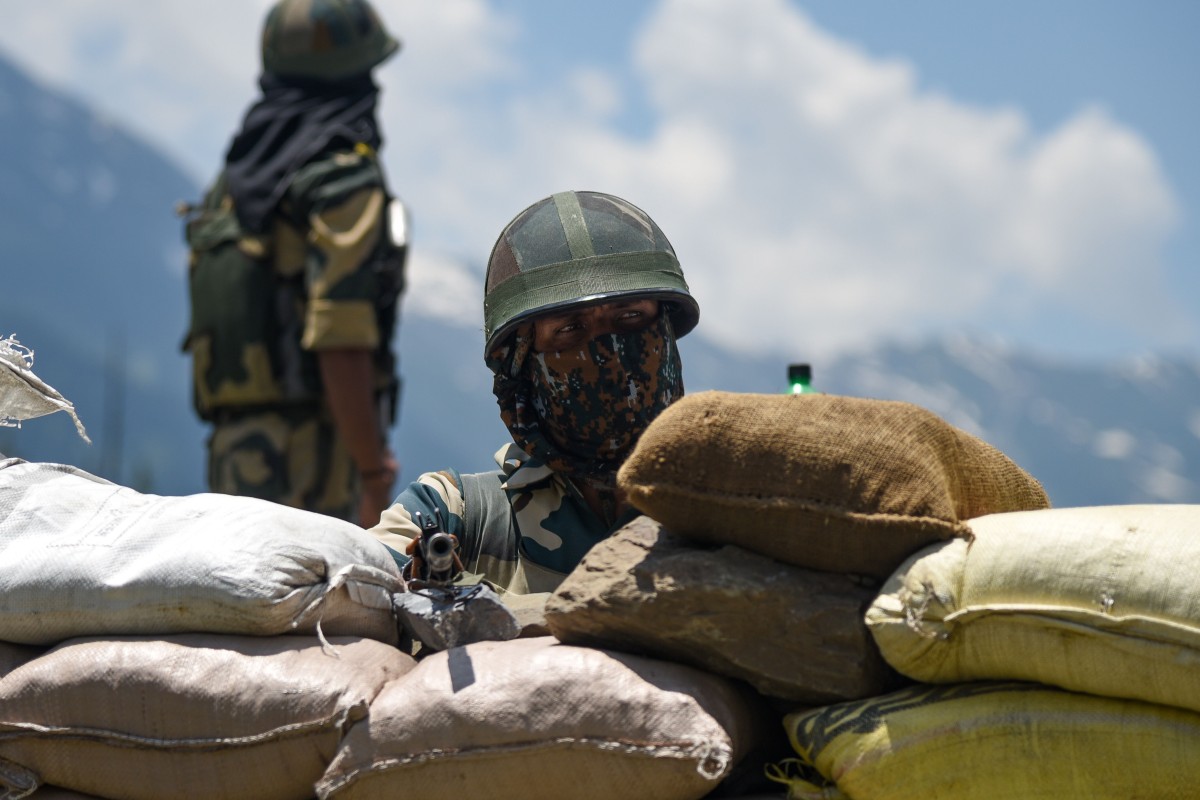
An Indian Border Security Force soldier in the Himalayan border region between India and China. Photo: DPA
China and India have accused each other of firing shots on their disputed border, violating a 1996 no-fire agreement and further escalating military tensions in the Himalayan border region.
Zhang Shuili, a spokesman for the People’s Liberation Army’s Western Theatre Command, said on Tuesday morning that Indian troops had violated an earlier agreement by crossing the disputed western border – the Line of Actual Control (LAC) – at the strategic outpost of Pangong Tso on Monday.
China-India border dispute: its origins and impact
30 Jul 2020
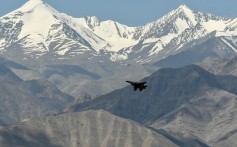
The statement said Chinese troops had been “forced to take an emergency response to stabilise the situation at the scene” – without further elaboration – and demanded India immediately stop its “dangerous action” and withdraw its troops.
Zhang said Indian troops had fired an unspecified number of shots when Chinese troops arrived at the scene. “The action of the Indian side has seriously violated the bilateral agreement and escalated the tension in the region. It is a serious military provocation.”
Hours later, India’s defence ministry denied its soldiers had fired any shots, but accused the Chinese side of opening fire in Monday’s clash. “It was the PLA troops who were attempting to close in with one of our forward positions along the LAC,” according to its statement.
New Delhi said PLA soldiers had fired “a few rounds in the air” in an attempt to intimidate their Indian counterparts. The statement criticised the Chinese troops’ “aggressive manoeuvres”.
“Despite the grave provocation, our troops exercised great restraint and behaved in a mature and responsible manner,” the statement continued, adding that the Indian Army was committed to peace but determined to protect national integrity “at all costs”.
China doubles down on claims Indian troops ‘violated’ border consensus
2 Sep 2020
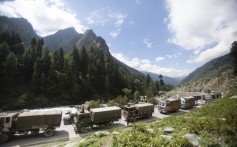
Zhang said Chinese troops were also determined to defend their country’s sovereignty and demanded that India ensured the discipline of its frontline troops. He called for India to launch an investigation into the incident.
China and India signed an agreement in 1996 that neither shall open fire within 2km (1.2 miles) of the LAC. Indian media said Monday’s incident marked the first shot fired since a clash in 1975, which killed four Indian soldiers.
The clash at Pangong Tso was the second in a week and followed a meeting between Chinese and Indian defence ministers in Moscow on Friday.
The worst border dispute between the two countries in four decades has escalated in recent months. A fatal clash in June left 20 Indian soldiers dead and an unknown number of casualties on the Chinese side.
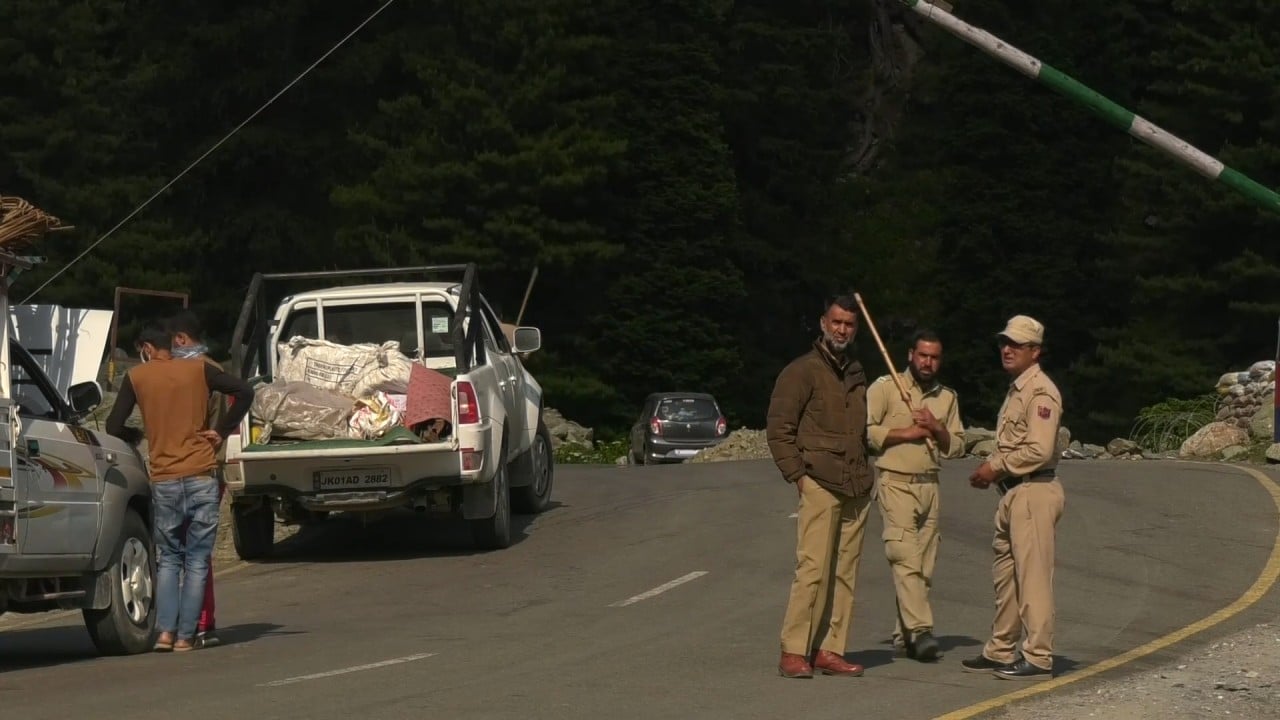
01:59
Death toll rises to 20 in border clash between India and China
Death toll rises to 20 in border clash between India and China
But reports of the June clash described the only weapons involved as sticks and nail-studded clubs, with no mention of any firearms.
Five Indian citizens from Arunachal Pradesh, the northeastern Indian state which borders China, have gone missing, with
their families alleging they were abducted by Chinese soldiers.
Indian External Affairs Minister Subrahmanyam Jaishankar said at an event on Monday that the situation in eastern Ladakh – the region which surrounds the glacier lake of Pangong Tso – was “very serious” and called for “deep conversations between the two sides at the political level,” according to Indian newspaper The Hindu.
In their meeting on the sidelines at the Shanghai Cooperation Organisation in Moscow on Friday, Chinese Defence Minister Wei Fenghe said responsibility for the present tension along the border “rests entirely with the Indian side” and China will defend “every inch of territory,” according to a weekend report by state news agency Xinhua.
In a statement on Saturday, Indian Defence Minister Rajnath Singh said the massing of Chinese troops, their “aggressive behaviour” and “attempts to unilaterally alter the status quo” violated bilateral agreements and were not in keeping with the understandings reached between the two sides’ special representatives.
The Indian statement said both Wei and Singh held “frank and in-depth discussions” in their meeting and had agreed to ease tensions.
From our archive
Conversations (26)

Matt Ho
Matt Ho has covered the dynamics of China’s changes for the Post since 2010. Before joining the Post, he was deputy Beijing bureau chief for Hong Kong Commercial Radio and a Hong Kong government international trade specialist.
videos at source
posted for fair use
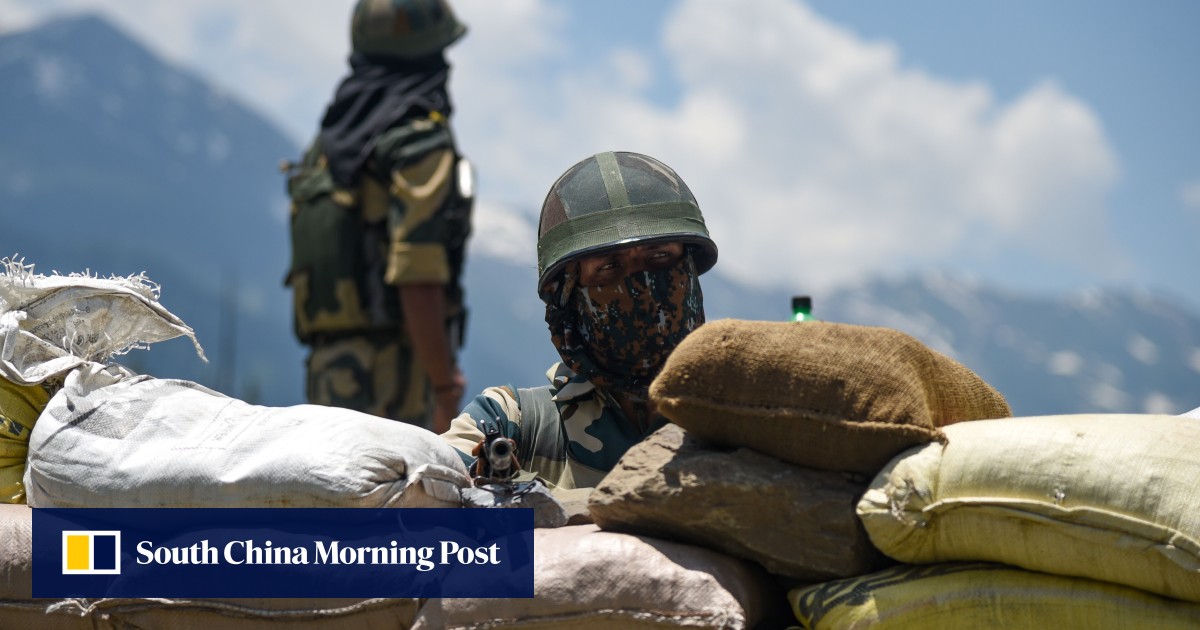
 www.scmp.com
www.scmp.com
- Both sides deny that their soldiers fired first shots along Line of Actual Control in Himalayas since 1996 agreement
- But each side claims opposing troops were moving forward at the time of the incident

Matt Ho
Published: 10:28am, 8 Sep, 2020
Updated: 3:23pm, 8 Sep, 2020

An Indian Border Security Force soldier in the Himalayan border region between India and China. Photo: DPA
China and India have accused each other of firing shots on their disputed border, violating a 1996 no-fire agreement and further escalating military tensions in the Himalayan border region.
Zhang Shuili, a spokesman for the People’s Liberation Army’s Western Theatre Command, said on Tuesday morning that Indian troops had violated an earlier agreement by crossing the disputed western border – the Line of Actual Control (LAC) – at the strategic outpost of Pangong Tso on Monday.
China-India border dispute: its origins and impact
30 Jul 2020

The statement said Chinese troops had been “forced to take an emergency response to stabilise the situation at the scene” – without further elaboration – and demanded India immediately stop its “dangerous action” and withdraw its troops.
Zhang said Indian troops had fired an unspecified number of shots when Chinese troops arrived at the scene. “The action of the Indian side has seriously violated the bilateral agreement and escalated the tension in the region. It is a serious military provocation.”
Hours later, India’s defence ministry denied its soldiers had fired any shots, but accused the Chinese side of opening fire in Monday’s clash. “It was the PLA troops who were attempting to close in with one of our forward positions along the LAC,” according to its statement.
New Delhi said PLA soldiers had fired “a few rounds in the air” in an attempt to intimidate their Indian counterparts. The statement criticised the Chinese troops’ “aggressive manoeuvres”.
“Despite the grave provocation, our troops exercised great restraint and behaved in a mature and responsible manner,” the statement continued, adding that the Indian Army was committed to peace but determined to protect national integrity “at all costs”.
China doubles down on claims Indian troops ‘violated’ border consensus
2 Sep 2020

Zhang said Chinese troops were also determined to defend their country’s sovereignty and demanded that India ensured the discipline of its frontline troops. He called for India to launch an investigation into the incident.
China and India signed an agreement in 1996 that neither shall open fire within 2km (1.2 miles) of the LAC. Indian media said Monday’s incident marked the first shot fired since a clash in 1975, which killed four Indian soldiers.
The clash at Pangong Tso was the second in a week and followed a meeting between Chinese and Indian defence ministers in Moscow on Friday.
The worst border dispute between the two countries in four decades has escalated in recent months. A fatal clash in June left 20 Indian soldiers dead and an unknown number of casualties on the Chinese side.

01:59
Death toll rises to 20 in border clash between India and China
Death toll rises to 20 in border clash between India and China
But reports of the June clash described the only weapons involved as sticks and nail-studded clubs, with no mention of any firearms.
Five Indian citizens from Arunachal Pradesh, the northeastern Indian state which borders China, have gone missing, with
their families alleging they were abducted by Chinese soldiers.
Indian External Affairs Minister Subrahmanyam Jaishankar said at an event on Monday that the situation in eastern Ladakh – the region which surrounds the glacier lake of Pangong Tso – was “very serious” and called for “deep conversations between the two sides at the political level,” according to Indian newspaper The Hindu.
In their meeting on the sidelines at the Shanghai Cooperation Organisation in Moscow on Friday, Chinese Defence Minister Wei Fenghe said responsibility for the present tension along the border “rests entirely with the Indian side” and China will defend “every inch of territory,” according to a weekend report by state news agency Xinhua.
In a statement on Saturday, Indian Defence Minister Rajnath Singh said the massing of Chinese troops, their “aggressive behaviour” and “attempts to unilaterally alter the status quo” violated bilateral agreements and were not in keeping with the understandings reached between the two sides’ special representatives.
The Indian statement said both Wei and Singh held “frank and in-depth discussions” in their meeting and had agreed to ease tensions.
From our archive
Conversations (26)

Matt Ho
Matt Ho has covered the dynamics of China’s changes for the Post since 2010. Before joining the Post, he was deputy Beijing bureau chief for Hong Kong Commercial Radio and a Hong Kong government international trade specialist.
videos at source
posted for fair use

China, India accuse each other of firing shots in tense border region
Both sides deny it was their soldiers who fired first shots at Line of Actual Control in Himalayas since 1996 agreement.
danielboon
TB Fanatic
Plain Jane
Just Plain Jane
Zerohedge
ZeroHedge - On a long enough timeline, the survival rate for everyone drops to zero
Shots Fired On India-China Flashpoint Border As Deescalation Talks Crumble

by Tyler Durden
Tue, 09/08/2020 - 09:57
TwitterFacebookRedditEmailPrint
China and India have each accused the other of firing shots across the border along the contested Line of Actual Control (LAC) in the high altitude flashpoint region of Ladakh.
Line of Actual Control
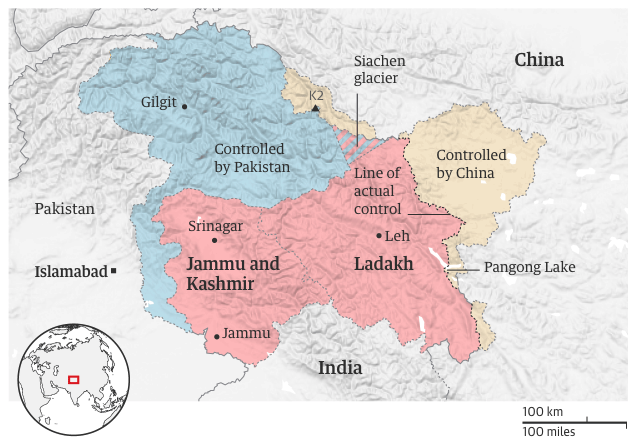
Beijing charged India with a "severe military provocation" after it claimed Indian troops breached the LAC and entered the Chinese to side. They then "opened fire to threaten the Chinese border defense patrol officers," according to the PLA charge.
An Al Jazeera correspondent in Beijing reports that "According to the Chinese side, Chinese troops approached the India side for negotiations, and then they say some Indian troops fired at the Chinese side."
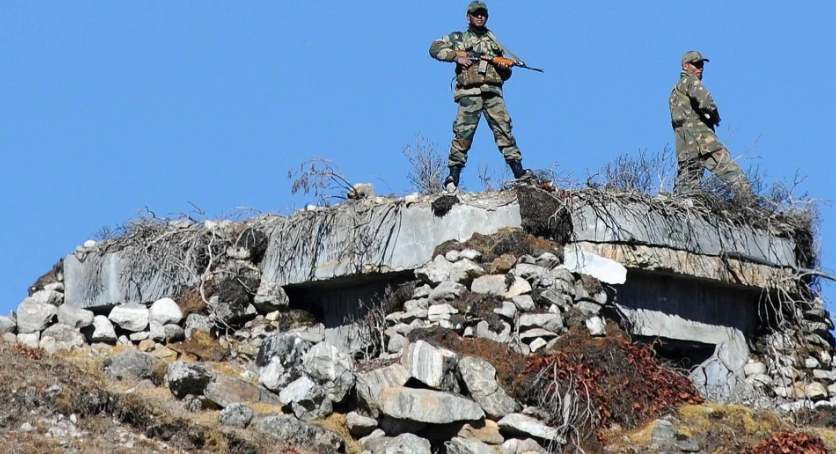 Image: AFP
Image: AFP"As a result, China's military said it was forced to take countermeasures - although we don't know what those countermeasures were, or if there were any casualties," the report added.
A series of high level military to military talks have thus far prevented this type of escalation since the June 15 incident which saw the rival sides clash in hand-to-hand combat, resulting in 20 Indian troop deaths and a presumed unknown number of PLA casualties.
But these talks appear to be unraveling, also as China's state-run English newspaper, Global Times, issues its account of what happened on Monday:
Indian troops again illegally crossed the Line of Actual Control (LAC) into the Shenpao mountain region near the south bank of Pangong Tso Lake on Monday. They then outrageously fired warning shots at Chinese border patrol troops who came to negotiate, and Chinese border patrol troops were forced to take measures to stabilize the area, a spokesperson of the Chinese People's Liberation Army (PLA) Western Theater Command said early Tuesday.
And this was followed with a stern warning, saying, "We must warn India seriously: You have crossed the line! Your frontline troops have crossed the line! Your nationalist public opinion has crossed the line! Your policy toward China has crossed the line! You are over-confidently provoking the PLA and Chinese people - this is like doing a handstand on the edge of a cliff!"
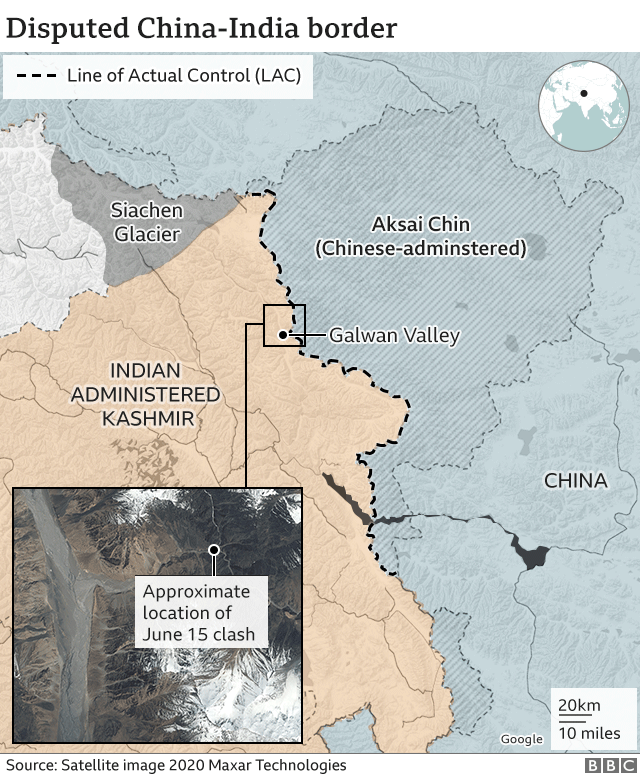
And further, Global Times continues:
New Delhi immediately threw the accusation back, denying that its own troops carried out the aggression, instead blaming China.Nationalist forces in India should think twice that if the Chinese and Indian armies change their agreement of handling friction along the border area to prioritize the use of gun, then what use of them seizing two commanding heights on the south bank of Pangong Tso Lake? Does commanding height make sense in modern military conflict? Between Indian and China, which country has more weaponry and which country has bigger military budget, can't Indians count out?
"Despite the grave provocation, (our) own troops exercised great restraint and behaved in a mature and responsible manner," the army added."It is the PLA that has been blatantly violating agreements and carrying out aggressive maneuvers," the Indian army said Tuesday in an official statement.
danielboon
TB Fanatic
The Intel Crab Retweeted
Jeff Seldin
@jseldin
·
2h
"#Chinese intelligence services have been very very active, as have the #Russia|ns"
@CISAKrebs
tells #BillingtonCyberSecurity
Jeff Seldin
@jseldin
·
2h
"#Chinese intelligence services have been very very active, as have the #Russia|ns"
@CISAKrebs
tells #BillingtonCyberSecurity
Hummm....though one of the replies to this noted that India never got a hundred kilometres into Pakistan, that's still something China cannot risk.
The minute anything larger than what a weapons platoon can drag up onto those ridgelines gets used, this whole mess will likelier than not spin out of control. Neither side can easily back down.
So let me get this straight China sends large number of forward deployed soldiers and conducts live fired drills and the official Chinese propaganda organ The New York Times, err check that the other one The Global Times accuses India of provocation for not rolling over.
Screw the despots in CCP!
Screw the despots in CCP!
danielboon
TB Fanatic
EndGameWW3 Retweeted
Wars on the Brink
@WOTB07
·
13m
In view of the current situation in the region, war preparations will have to be stepped up - Pakistan's Army chief General Qamar Javed Bajwa.


Wars on the Brink
@WOTB07
·
13m
In view of the current situation in the region, war preparations will have to be stepped up - Pakistan's Army chief General Qamar Javed Bajwa.



jward
passin' thru
Col Ashok; Veteran
@ashokkmrsingh
#MilitaryIntelligenceAlert USA and allies have deployed enough F 35 and other eliments of Air Power to intervene in case limited war between India and China breaks out... Pak is on Thier radar in case they side with China..
@ashokkmrsingh
#MilitaryIntelligenceAlert USA and allies have deployed enough F 35 and other eliments of Air Power to intervene in case limited war between India and China breaks out... Pak is on Thier radar in case they side with China..
jward
passin' thru

EndGameWW3
@EndGameWW3
14m
To counter China, India inks military pact with Japan http://toi.in/n8oB_Z/a24gkvia
@timesofindia
https://twitter.com/EndGameWW3/status/1304196719308087299?s=20
danielboon
TB Fanatic
Boy the alliances are joining up quickly here and in the Mediterranean

EndGameWW3
@EndGameWW3
14m
To counter China, India inks military pact with Japan http://toi.in/n8oB_Z/a24gkvia
@timesofindia
https://twitter.com/EndGameWW3/status/1304196719308087299?s=20
Hummm......Does this include the shade of India's "umbrella"?
jward
passin' thru
Dragon on the Dialogue Table: What Jaishankar-Wang Yi Meet Implies
Jaishankar’s meeting with Wang Yi in Moscow comes days after Rajnath Singh met his counterpart.
Aditya Raj Kaul
Updated: 11 Sep 2020, 03:48 AM IST
India
7 min read
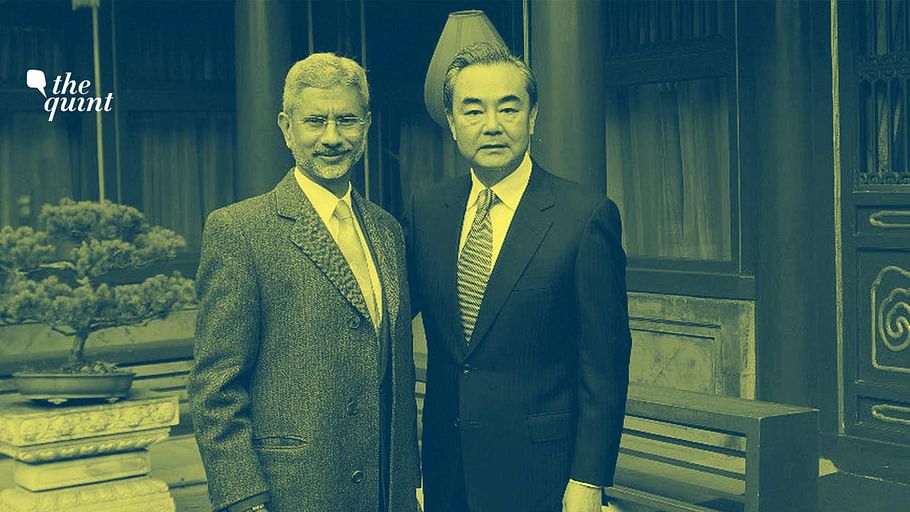
i
India and China signed the historic Panchsheel agreement on 29 April 1954 which enshrined the five principles of mutual co-existence. That certainly didn’t help build any bridges and couldn’t stop the Sino-Indian war of October 1962 that killed hundreds on both sides.
Almost 58 years later, India and China have reached a five-point consensus in the meeting between Indian External Affairs Minister Dr S Jaishankar and his Chinese counterpart Wang Yi. The five points broadly speak about continuation of dialogue, disengagement at the border, not allowing differences to become disputes, respecting past border agreements and new trust-building measures.
Jaishankar in the more than two-hour long meeting is believed to have strongly raised concerns on aggression by Chinese People’s Liberation Army (PLA) at the Line of Actual Control (LAC) in Eastern Ladakh and stressed on the need to maintain peace and tranquility.
The Immediate Task Before New Delhi
Indian Government believes that the provocative behaviour of the Chinese frontline troops at numerous incidents of friction along the LAC also showed disregard for bilateral agreements and protocols.
The immediate task New Delhi feels is to ensure a comprehensive disengagement of troops in all the friction areas. That is necessary to prevent any untoward incident in the future.
Jaishankar also emphasised that the Indian troops had scrupulously followed all agreements and protocols pertaining to the management of the border areas. Indian Army doesn’t want to escalate and has no intent to change the status quo but shall defend its territory, come what may, without an offensive intent.
Jaishankar’s meeting with Wang Yi in Moscow comes days after Indian Defence Minister Rajnath Singh met his counterpart at the latter’s request in Moscow on the sidelines of the SCO meeting and both sides decided to keep the communication lines open.
While the diplomatic and military parleys continue, the PLA troops of China in the Pangong Tso area have been strategising desperately to capture some of the Indian heights in the area for military dominance. The Indian Army, however, has outsmarted the Chinese learning its lessons after the Galwan Valley violent face-off in which India lost 20 of its soldiers.
Changes in How India Militarily Deals With Beijing
Over the last more than four months, Ladakh has been an unprecedented focus in national and international media because of fresh border tensions between India and China which began with casualties on both sides in the Galwan Valley, resulting in diplomatic as well as military standoff between the two nuclear-armed nations.
India initially failed to check Chinese aggression and was caught unprepared to tackle the bully. The violent episode, however, changed in many ways not just the China policy for New Delhi but also how India would deal with Beijing militarily at the LAC.
On the night of 29 August, a specialised unit of Special Frontier Force (SFF) which comprises mainly of the Tibetan soldiers and reports directly to Research and Analysis Wing (RAW), carried out a very challenging operation after India pre-empted that the Chinese were about to carry out transgression in the South of Pangong.
New Delhi in the darkness of the night put its best mountaineers and skilled soldiers in duty to capture three important heights for strategic dominance and successfully achieved the same before morning of 30 August. By late afternoon of 30 August, specialised equipment and ammunition including tanks were also pressed at those heights.
India’s never seen before operation in the South of Pangong Tso, however, led to a causality.
Even though SFF has made many sacrifices in the last many decades, their operations and existence has mostly remained a mystery.
“He was a very brave commando. Tibetan by blood but Indian at heart. He died in the line of duty on 29 August night during an operation near the Blacktop peak around the South Bank of Pangong when he stepped on an old anti-personnel mine which was put by Chinese PLA around 1962,” revealed a source.
Buddhist chants resonated across Choglamsar of Leh in the wee hours of 7 September as the mortal remains of Special Frontier Force (SFF) soldier Company Leader Nyima Tenzin were taken out from his home at the Tibetan Refugee Settlement for his last journey.
Thousands waited on the streets at around 7 in the morning to get their last glimpse of the Tibetan hero who was draped in both Tibetan as well as Indian national flag. The mortal remains were taken around the entire area and even touched the Headquarters of Vikas Regiment also known as Establishment 2-2, the secret Tibetan guerrilla squad which played a significant role in the recent repositioning and strategic mobilisation at the Pangong Tso by India.
First Time in 45 Years, Firing at LAC
The Chinese were in no mood to simply digest being outsmarted by a Tibetan Indian force.
On 7 September, Chinese PLA tried to yet again show aggression and used medieval weapons with sharp blades against Indian forces to enter Indian territory illegally and forcefully. The incident led to firing from both sides. It was for the first time in 45 years that a raging Sino-Indian conflict led to firing at the LAC.
India has also massively carried out redeployments of troops and readjusted them at strategic heights and points along the LAC to dominate over the Chinese. Looking at a long haul and the upcoming winters, massive preparations are underway to keep stocks and logistics for the troops in abundant supply along with the required artillery and ammunition.
The formal induction of Rafale has been keenly observed the world over and it’s only imminent that the omni role twin engine air dominance jet would be pressed into Ladakh as well.
On the other hand, the shrill media posturing from China and its loud statements indicate that both countries are at the brink of a war.
Yet, Beijing doesn’t realise that its expansionist tendencies and hegemonic approach won’t be tolerated anymore by India or the world and hence, slowly China is being isolated globally by major powers be it due to its actions in the South China Sea or the LAC transgression. Or for that matter the human rights violations against its own so called people in Xinjiang, Tibet and Hong Kong. The coronavirus pandemic outbreak and the lackadaisical approach by China, too, has led to a global condemnation of Beijing.
Setback to Xi’s China Dream?
China seems to have taken the old adage of Sun Tzu that ‘all warfare is based on deception’ a little too seriously.
Empty threats through Chinese state media to put India in a spot has long failed as a concrete long-term strategy. The psychological warfare through military drill videos and warnings isn’t going to work anymore. In the process, China itself has all this while been hiding the number of casualties it faced in the violent face-off along the LAC with India.
For now New Delhi will have to tackle the wolf warrior diplomacy of the Chinese and be ready for any full scale eventuality. Beijing’s predominant fear has been the Aksai Chin which connects Tibet with Xinjiang, and with Indian Army’s stronghold over Ladakh there would remain a permanent threat for Beijing in the strategically important area.
While India’s latest move in Eastern Ladakh is a clear message to Xi Jinping to keep his China dream under check, only time will tell if at all India can trust the dragon on the dialogue table?
For now diplomacy is the way forward but the two months to the onset of winter shall remain critical to decide the future of India-China relations that have taken a nose-dive and New Delhi’s fresh punch to the CPC may end up in unforeseeable outcomes. For now, however, Xi Jinping has lost face since the PLA failed to anticipate India’s surprise moves in the South of Pangong Two in Eastern Ladakh.
The question however remains: Will Xi be able to take the setback to his China Dream and the rejuvenation plan?
(Aditya Raj Kaul has a decade’s worth of experience in covering conflict, internal security and foreign policy for various national media outlets. He tweets at @AdityaRajKaul.)
Liked this story? We'll send you more. Subscribe to The Quint's newsletter and get selected stories delivered to your inbox every day. Click to get started.
The Quint is available on Telegram & WhatsApp too, click to join.
Published: 11 Sep 2020, 12:35 AM IST
posted for fair use
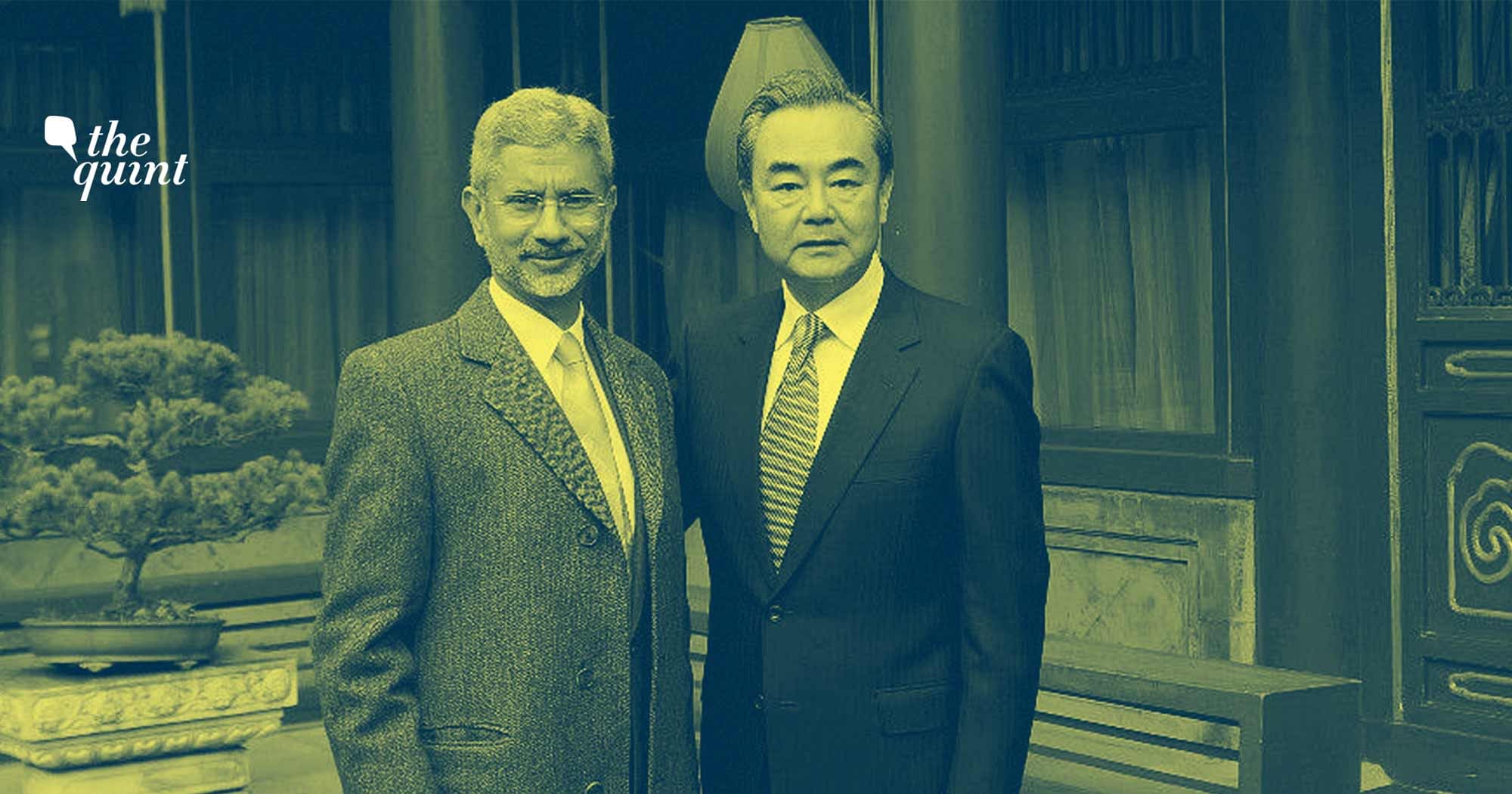
 www.thequint.com
www.thequint.com
Jaishankar’s meeting with Wang Yi in Moscow comes days after Rajnath Singh met his counterpart.
Aditya Raj Kaul
Updated: 11 Sep 2020, 03:48 AM IST
India
7 min read

i
India and China signed the historic Panchsheel agreement on 29 April 1954 which enshrined the five principles of mutual co-existence. That certainly didn’t help build any bridges and couldn’t stop the Sino-Indian war of October 1962 that killed hundreds on both sides.
Almost 58 years later, India and China have reached a five-point consensus in the meeting between Indian External Affairs Minister Dr S Jaishankar and his Chinese counterpart Wang Yi. The five points broadly speak about continuation of dialogue, disengagement at the border, not allowing differences to become disputes, respecting past border agreements and new trust-building measures.
Jaishankar in the more than two-hour long meeting is believed to have strongly raised concerns on aggression by Chinese People’s Liberation Army (PLA) at the Line of Actual Control (LAC) in Eastern Ladakh and stressed on the need to maintain peace and tranquility.
India accused China of changing the status quo unilaterally through aggression and asked Beijing to immediately move back its troops from the areas where they are stationed presently in an eyeball to eyeball situation with the Indian troops.The Indian Foreign Minister vehemently rejected China’s allegation that Indian troops crossed LAC on the night of 29 and 30 August.
The Immediate Task Before New Delhi
Indian Government believes that the provocative behaviour of the Chinese frontline troops at numerous incidents of friction along the LAC also showed disregard for bilateral agreements and protocols.
The immediate task New Delhi feels is to ensure a comprehensive disengagement of troops in all the friction areas. That is necessary to prevent any untoward incident in the future.
Jaishankar also emphasised that the Indian troops had scrupulously followed all agreements and protocols pertaining to the management of the border areas. Indian Army doesn’t want to escalate and has no intent to change the status quo but shall defend its territory, come what may, without an offensive intent.
Jaishankar’s meeting with Wang Yi in Moscow comes days after Indian Defence Minister Rajnath Singh met his counterpart at the latter’s request in Moscow on the sidelines of the SCO meeting and both sides decided to keep the communication lines open.
While the diplomatic and military parleys continue, the PLA troops of China in the Pangong Tso area have been strategising desperately to capture some of the Indian heights in the area for military dominance. The Indian Army, however, has outsmarted the Chinese learning its lessons after the Galwan Valley violent face-off in which India lost 20 of its soldiers.
Changes in How India Militarily Deals With Beijing
Over the last more than four months, Ladakh has been an unprecedented focus in national and international media because of fresh border tensions between India and China which began with casualties on both sides in the Galwan Valley, resulting in diplomatic as well as military standoff between the two nuclear-armed nations.
India initially failed to check Chinese aggression and was caught unprepared to tackle the bully. The violent episode, however, changed in many ways not just the China policy for New Delhi but also how India would deal with Beijing militarily at the LAC.
On the night of 29 August, a specialised unit of Special Frontier Force (SFF) which comprises mainly of the Tibetan soldiers and reports directly to Research and Analysis Wing (RAW), carried out a very challenging operation after India pre-empted that the Chinese were about to carry out transgression in the South of Pangong.
New Delhi in the darkness of the night put its best mountaineers and skilled soldiers in duty to capture three important heights for strategic dominance and successfully achieved the same before morning of 30 August. By late afternoon of 30 August, specialised equipment and ammunition including tanks were also pressed at those heights.
Contributions of SFFBeijing was caught napping for the first time, and quite expectedly in a furious tone asked New Delhi to vacate the territory which it called Chinese. New Delhi in response asked China to avoid indulging in further aggression to maintain peace. India also termed it as safeguarding its territory and national interests. Indian Army called it a purely defensive measure taken after observation of troop and tank movement on the Chinese side.
India’s never seen before operation in the South of Pangong Tso, however, led to a causality.
Even though SFF has made many sacrifices in the last many decades, their operations and existence has mostly remained a mystery.
While Indian Government has remained silent on the operation where SFF Commando Nyima Tenzin was Killed In Action (KIA) for operational and national security reasons, tales of his bravery are being narrated by proud fellow Tibetans across the world.Known as the best mountaineers and ruthless in the defence of their territory in the most difficult terrain, the SFF almost entirely comprises of Tibetan refugees in exile, settled in India.
“He was a very brave commando. Tibetan by blood but Indian at heart. He died in the line of duty on 29 August night during an operation near the Blacktop peak around the South Bank of Pangong when he stepped on an old anti-personnel mine which was put by Chinese PLA around 1962,” revealed a source.
Buddhist chants resonated across Choglamsar of Leh in the wee hours of 7 September as the mortal remains of Special Frontier Force (SFF) soldier Company Leader Nyima Tenzin were taken out from his home at the Tibetan Refugee Settlement for his last journey.
Thousands waited on the streets at around 7 in the morning to get their last glimpse of the Tibetan hero who was draped in both Tibetan as well as Indian national flag. The mortal remains were taken around the entire area and even touched the Headquarters of Vikas Regiment also known as Establishment 2-2, the secret Tibetan guerrilla squad which played a significant role in the recent repositioning and strategic mobilisation at the Pangong Tso by India.
First Time in 45 Years, Firing at LAC
The Chinese were in no mood to simply digest being outsmarted by a Tibetan Indian force.
On 7 September, Chinese PLA tried to yet again show aggression and used medieval weapons with sharp blades against Indian forces to enter Indian territory illegally and forcefully. The incident led to firing from both sides. It was for the first time in 45 years that a raging Sino-Indian conflict led to firing at the LAC.
Sources in the national security apparatus in New Delhi indicate that Indian Army in the last few days has further strengthened its position on several peaks on both North and South of the Pangong Tso even though there has been stiff resistance from the Chinese PLA.Although China termed it as warning shots in the air, New Delhi outrightly rejected the charge and blamed China for violating bilateral understanding of no-firing at the borders.
India has also massively carried out redeployments of troops and readjusted them at strategic heights and points along the LAC to dominate over the Chinese. Looking at a long haul and the upcoming winters, massive preparations are underway to keep stocks and logistics for the troops in abundant supply along with the required artillery and ammunition.
The formal induction of Rafale has been keenly observed the world over and it’s only imminent that the omni role twin engine air dominance jet would be pressed into Ladakh as well.
On the other hand, the shrill media posturing from China and its loud statements indicate that both countries are at the brink of a war.
Yet, Beijing doesn’t realise that its expansionist tendencies and hegemonic approach won’t be tolerated anymore by India or the world and hence, slowly China is being isolated globally by major powers be it due to its actions in the South China Sea or the LAC transgression. Or for that matter the human rights violations against its own so called people in Xinjiang, Tibet and Hong Kong. The coronavirus pandemic outbreak and the lackadaisical approach by China, too, has led to a global condemnation of Beijing.
Setback to Xi’s China Dream?
China seems to have taken the old adage of Sun Tzu that ‘all warfare is based on deception’ a little too seriously.
Empty threats through Chinese state media to put India in a spot has long failed as a concrete long-term strategy. The psychological warfare through military drill videos and warnings isn’t going to work anymore. In the process, China itself has all this while been hiding the number of casualties it faced in the violent face-off along the LAC with India.
For now New Delhi will have to tackle the wolf warrior diplomacy of the Chinese and be ready for any full scale eventuality. Beijing’s predominant fear has been the Aksai Chin which connects Tibet with Xinjiang, and with Indian Army’s stronghold over Ladakh there would remain a permanent threat for Beijing in the strategically important area.
Yet both New Delhi and Beijing are on a rough pitch with no country willing to compromise or take a step back and resolve the face-off through a peaceful dialogue.India has shown its national resolve to not compromise on its territorial integrity. It has also shown a national will to walk the extra mile if need be to counter Chinese expansionism and provocation.
While India’s latest move in Eastern Ladakh is a clear message to Xi Jinping to keep his China dream under check, only time will tell if at all India can trust the dragon on the dialogue table?
For now diplomacy is the way forward but the two months to the onset of winter shall remain critical to decide the future of India-China relations that have taken a nose-dive and New Delhi’s fresh punch to the CPC may end up in unforeseeable outcomes. For now, however, Xi Jinping has lost face since the PLA failed to anticipate India’s surprise moves in the South of Pangong Two in Eastern Ladakh.
The question however remains: Will Xi be able to take the setback to his China Dream and the rejuvenation plan?
(Aditya Raj Kaul has a decade’s worth of experience in covering conflict, internal security and foreign policy for various national media outlets. He tweets at @AdityaRajKaul.)
Liked this story? We'll send you more. Subscribe to The Quint's newsletter and get selected stories delivered to your inbox every day. Click to get started.
The Quint is available on Telegram & WhatsApp too, click to join.
Published: 11 Sep 2020, 12:35 AM IST
posted for fair use

Dragon on the Dialogue Table: What Jaishankar-Wang Yi Meet Implies
S Jaishankar in the more than two-hour long meeting is believed to have strongly raised concerns on aggression by Chinese PLA at the LAC in Eastern Ladakh and stressed on the need to maintain peace and tranquility.
jward
passin' thru
To counter China, India inks military pact with Japan
EndGameWW3
@EndGameWW3
14m
To counter China, India inks military pact with Japan http://toi.in/n8oB_Z/a24gkvia
@timesofindia
https://twitter.com/EndGameWW3/status/1304196719308087299?s=20
Rajat Pandit / TNN / Updated: Sep 11, 2020, 07:49 IST
Up Next
- To counter China, India inks military pact with Japan
- Aadhaar to help DL, RC renewal
- Here's how to get the kids to learn on their own
- JP Nadda accuses Mamata Banerjee government of being anti-Hindu
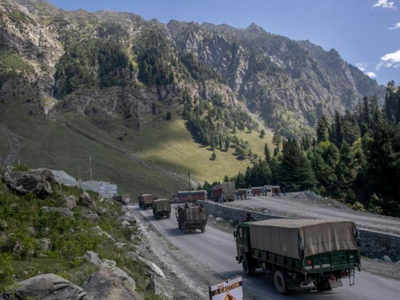
An Army convoy moves towards Ladakh via Gagangeer in Kashmir (AP)
NEW DELHI: India is working to enhance its strategic reach in the Indian Ocean and beyond by clinching reciprocal military logistics pacts with friendly countries to counter China’s expanding footprint across the Indo-Pacific region.
Japan has now become the sixth country, after the US, France, Australia, South Korea and Singapore, with which India has such an agreement to enable military forces to share logistics to support each other’s warships and aircraft as well as bolster overall interoperability and defence cooperation.
“India is negotiating similar pacts with the UK and Russia. The Russian one should be inked later this year. We don’t have the intention or the wherewithal to establish overseas bases like China is doing far and wide,” a senior official said on Thursday.
Defence secretary Ajay Kumar and Japanese ambassador Suzuki Satoshi signed the agreement on “reciprocal provision of supplies and services” between the Indian armed forces and the Japanese self-defence forces.
posted for fair use

To counter China, India inks military pact with Japan | India News - Times of India
India News: Japan has now become the sixth country, after the US, France, Australia, South Korea and Singapore, with which India has clinched a reciprocal pact to
jward
passin' thru
:: shrugs :: Says they're making arrangements w/ many for logistics support.Hummm......Does this include the shade of India's "umbrella"?
Isn't Japan one of those who only need to pull on their special tool belts to have their own shade makers?


